EDUH Initiatives & Consultancy, LLP
CyberSecurity Services
CyberSecurity Services

Cybersecurity Testing Services Of EDUH is designed to help organizations proactively identify and address security vulnerabilities across their digital assets. At the heart of our offering is penetration testing—a proactive, real-world approach to security that simulates cyberattacks to identify and address vulnerabilities before they can be exploited. Our services go beyond surface-level scans, delivering deep, expert-driven insights through advanced testing of your networks, applications, and systems. Whether you’re aiming to meet compliance standards, protect critical data, or fortify your brand’s reputation, we provide the intelligence and assurance your business needs to stay secure and competitive. Partner with us to turn cybersecurity from a risk into a strategic advantage.

In today’s interconnected digital landscape, organizations face an ever-increasing threat of cyberattacks. This Penetration Testing Plan is designed to uncover vulnerabilities in critical systems, applications, and networks, enabling your organization to prioritize and remediate risks effectively.
Our primary objective is to enhance your organization’s overall resilience against cyber threats while aligning with industry best practices and compliance frameworks such as ISO 27001, OWASP, and NIST.
Key benefits of our penetration testing include:
Identification of critical vulnerabilities and their associated risks
Prioritized remediation strategies to address the most pressing issues
Increased trust and confidence from stakeholders, clients, and regulatory bodies
Strengthened security measures to prevent future attacks






• Testing for vulnerabilities such as SQL Injection, Cross-Site Scripting (XSS), Directory Traversal, and other OWASP Top 10 threats.
• Assessing authentication mechanisms, session management, and access control implementations.

• External and internal network penetration testing to identify weaknesses in perimeter defenses, firewalls, and access controls.
• Identifying potential entry points for attackers, including misconfigured services and open ports.

• Scanning and testing operating systems, software, and configurations for known vulnerabilities.
• Evaluating endpoint protection mechanisms such as antivirus and patch management.
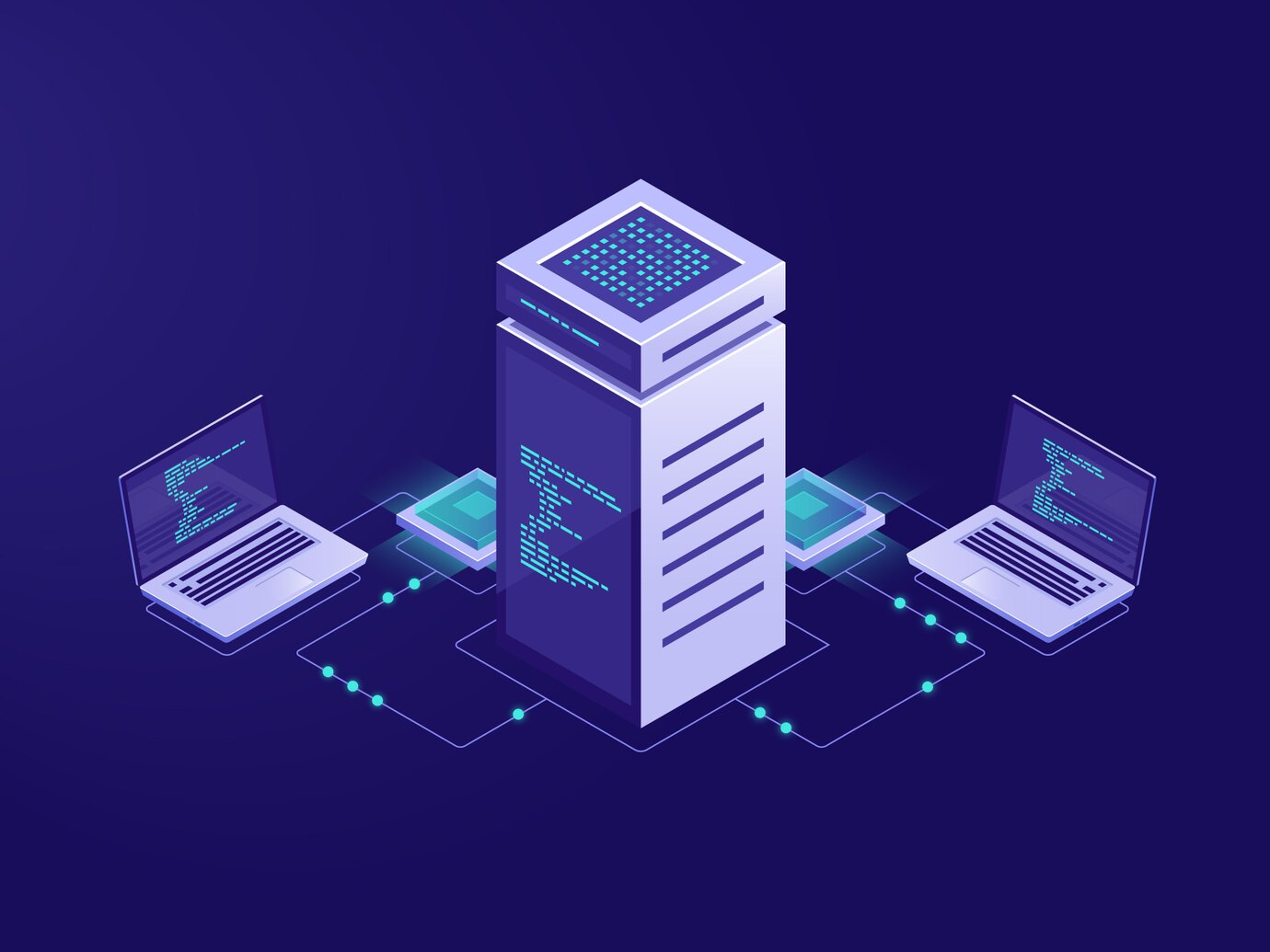
• Evaluating exposed APIs for misconfigurations, authentication flaws, and data leakage.
• Ensuring secure data exchange and preventing unauthorized access.

• Assessing cloud environments such as AWS, Azure, or GCP for misconfigurations, exposed services, and insecure storage.
• Evaluating identity and access management controls in cloud environments.

•Reviewing user authentication systems for weaknesses, including brute force,
credential stuffing, and weak password policies.
• Ensuring proper role-based access control and privilege management.






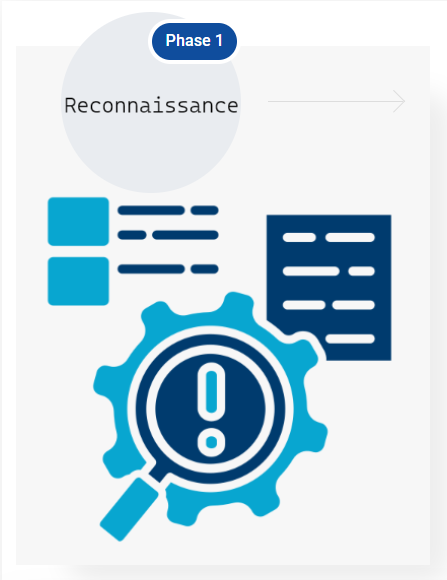
The reconnaissance phase involves collecting as much information as possible about the target environment. This includes identifying IP ranges, domain names, network infrastructure, and potential entry points. Both passive and active reconnaissance techniques are employed to build a comprehensive profile of the target.
Key Activities :
Tools Used :
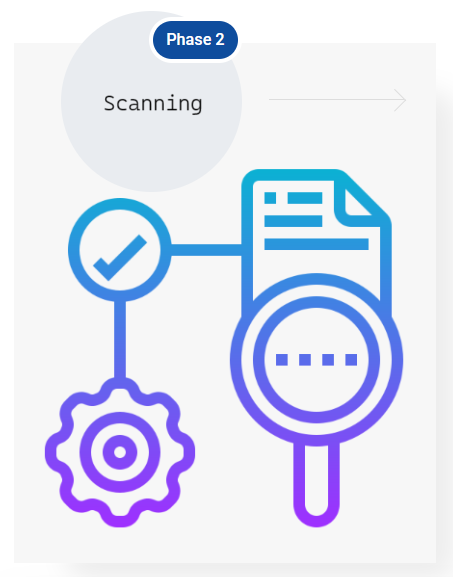
During the scanning phase, we perform technical assessments to identify active systems, open ports, running services, and potential vulnerabilities. This phase involves more direct interaction with the target systems to gather detailed technical information.
Scanning Techniques :
Tools Used :
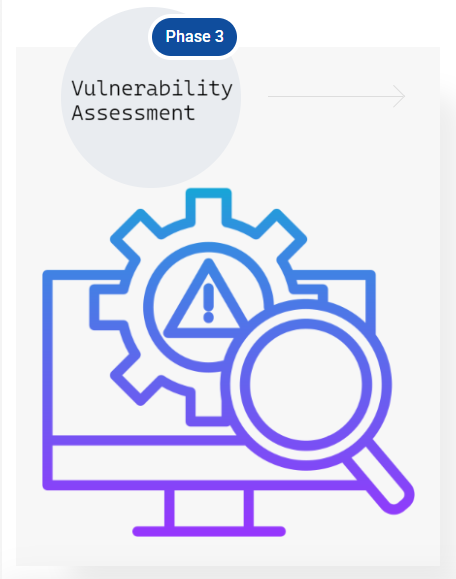
In this phase, we analyze the data collected during scanning to identify security vulnerabilities and weaknesses. We use a combination of automated tools and manual analysis to discover potential security issues across the target environment.
Assessment Areas :
Methodology :
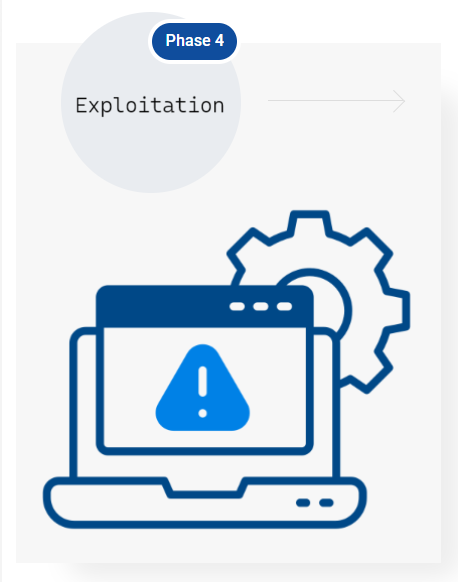
The exploitation phase involves attempting to safely exploit identified vulnerabilities to demonstrate their real-world impact. This helps validate the findings and provides concrete evidence of security risks that need to be addressed.
Exploitation Approach :
Tools & Techniques :

The final phase involves comprehensive documentation of all findings, including detailed descriptions of vulnerabilities, their potential impact, and specific recommendations for remediation. This phase ensures that the organization has actionable information to address the identified security issues.
Report Components :
Post-Engagement Activities :

An overview of vulnerabilities identified through automated scanning tools, categorized by severity (Critical, High, Medium, Low) and risk level with CVE details and basic remediation steps.

A comprehensive document containing identified vulnerabilities with detailed descriptions, evidence of exploitation (e.g., screenshots, logs), risk ratings, and specific recommendations for remediation.

Examples of how specific vulnerabilities were exploited, including detailed steps taken and outcomes, to illustrate their real-world impact and convince stakeholders of the importance of remediation.

A non-technical summary highlighting key findings, risks, and remediation priorities, tailored for management and stakeholders to understand the security posture without technical details.

Actionable steps and best practices to address identified vulnerabilities and strengthen overall security posture, including specific technical recommendations and prioritization guidance.

Availability for clarification of findings or guidance on implementing remediation measures for a defined period after the engagement, ensuring the organization can effectively address all identified issues.





© 2024 EDUH Initiatives & Consultancy, LLP. All Rights Reserved

An ISO21001:2018 Accredited Company